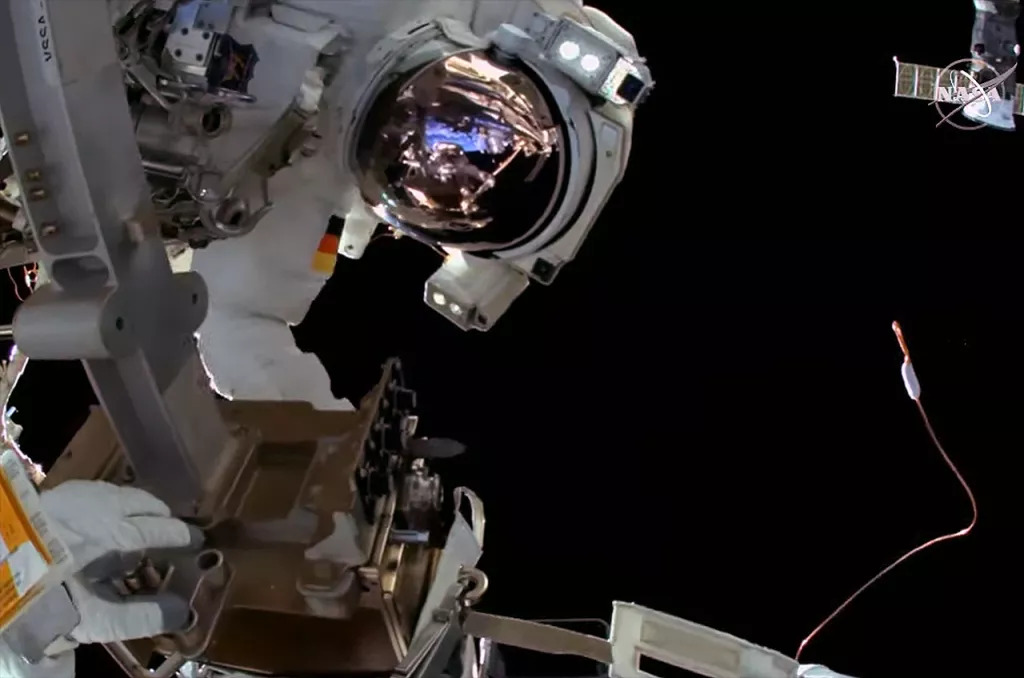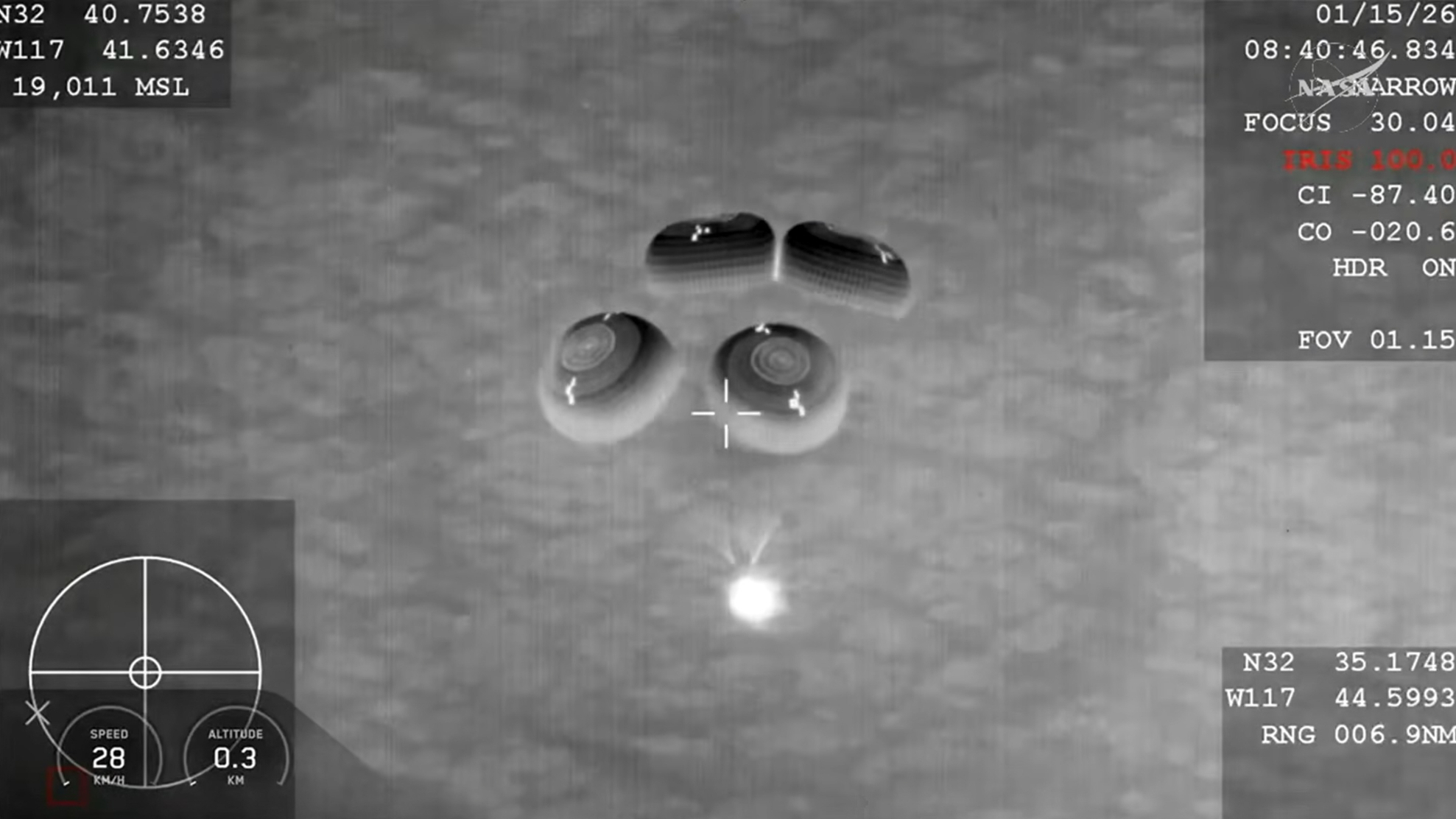NASA just picked these 2 companies to build next-gen spacesuits for the moon, space station
The contracts will support the International Space Station and the Artemis moon program through 2034.

NASA has selected two companies to make spacesuits for its Artemis moon program and future International Space Station (ISS) missions.
Teams led by Axiom Space and Collins Aerospace (with ILC Dover as a major contributor) received access to a contract worth up to a total of $3.5 billion to supply spacesuits for future NASA missions through 2034, agency officials announced today (June 1).
Like the private outfits that send cargo and astronauts to the International Space Station, Axiom and Collins don't have guaranteed orders yet under the contract. (The Collins-ILC Dover team has decades of experience supplying spacesuits to NASA, while Axiom is a new entrant.)
But they will have opportunities to vie for task orders for missions as soon as 2025, including a demonstration mission outside the ISS and the debut Artemis moon landing during the Artemis 3 mission, which is targeted for 2025 or 2026, NASA officials said during a press conference today.
As spacesuit development proceeds within the companies, "NASA will be certifying alongside to make sure that they are ready for our astronauts," Vanessa Wyche, director of NASA's Johnson Space Center in Houston, said during today's livestreamed event. "Then, once the suits are ready, they will be used."
Related: The evolution of the spacesuit in pictures
The two companies said such work aligns with their own plans to contribute spacesuits for customers beyond NASA, as commercial space opportunities proliferate in the industry.
Breaking space news, the latest updates on rocket launches, skywatching events and more!
"We have a number of customers that already would like to do a spacewalk," Michael Suffredini, a former senior NASA official who is now president and CEO of Axiom Space, told reporters today. "We had planned to build a suit as part of our program."
Axiom Space is seeking to install a module on the ISS by 2024 as the core of a new, independent space station. The company has already run one private crewed mission to the ISS — Ax-1, which launched and landed in April — and has others in the works as well.
The spacesuit designs are still at an early stage, although the companies emphasized that their units will be somewhat modular, as lightweight and flexible as possible, and will integrate feedback from astronauts and the flight community in assessing the best path forward for completion.
"It shouldn't feel like a spacecraft," Dan Burbank, senior technical fellow at Collins Aerospace and a retired NASA astronaut, told reporters today, referring to how a spacesuit should operate.

Burbank, who logged seven hours of spacewalk time during space shuttle mission STS-115 in September 2006, said community feedback is key.
"We want to be able to create an immersive environment that, for the crew member, gives them the most amount of mobility," he said.
For example, NASA officials said that the next generation of spacesuits will have a more flexible fit for a wider variety of body types, addressing a criticism of the spacesuits that agency astronauts use at the moment. NASA has conducted just one all-woman spacewalk to date, in 2019, largely due to the difficulty of swapping out the right-sized spacesuit parts in orbit.
The new suits will replace the agency's extravehicular mobility units (EMUs), two generations of which have been produced since 1983 to serve space shuttle and ISS missions. Both EMU versions were produced by a team led by ILC Dover and Collins Aerospace.
NASA said today that the EMUs are "aging." An example: Astronauts are unable to use EMUs on the space station for routine spacewalks at the moment, due to a spacesuit water leak in March that is still being investigated. (The cause will take time to determine, as the affected unit needs to be shipped to Earth for analysis; it's the most severe incident of its type since a resolved leaking issue in 2013.)

NASA has been working on its own sets of next-generation spacesuits for about 15 years across several programs. The latest designed to support the Artemis program, for example, was called the Exploration Extravehicular Mobility Unit (xEMU). But an August 2021 report from the NASA Office of Inspector General found that setbacks in xEMU development would likely delay the first Artemis landing at least a year from 2024, among other issues.
Past reports from outlets such as Ars Technica suggest that NASA's current drive to procure spacesuits from industry rather than to make them in house is designed to save on cost and complication.
As xEMU development was proceeding, the agency expressed interest in April 2021 in bringing on commercial partners to develop, build and maintain spacesuit technology for spacewalks, which are also called extravehicular activities (EVAs).
That was the origin of the September 2021 Exploration Extravehicular Activity Services (xEVAS) contract solicitation, which led to today's announcement. The solicitation required all competitors (including selectees Collins Aerospace and Axiom Space) to spend money of their own in developing their spacesuit systems.
Both selected companies said today that their systems are at a fairly advanced state of development already, and that they'll continue to borrow from the bank of information concerning xEMU's development and that of other systems in NASA's EVA Technical Library.
Presumably, lessons learned will also be drawn from the Apollo missions, which developed a few types of moonsuit that were used on the lunar surface in the late 1960s and early 1970s. Those are the only spacesuits that have ever operated on another world.
While the new spacesuits are expected to operate in different environments (microgravity and the lunar surface), NASA said the requirements shouldn't be too much different, aside from pressure and the need to walk, as opposed to grapple.
The proposed designs were not discussed in detail during today's press conference. Collins' Burbank suggested that spacesuit changes between floating and walking might simply be a matter of swapping out the lower torso. But both teams' designs will be refined in the coming years to make sure they meet NASA's needs for mass, interoperability with spacecraft systems and safety, among other factors.
Follow Elizabeth Howell on Twitter @howellspace. Follow us on Twitter @Spacedotcom and on Facebook.

Elizabeth Howell (she/her), Ph.D., was a staff writer in the spaceflight channel between 2022 and 2024 specializing in Canadian space news. She was contributing writer for Space.com for 10 years from 2012 to 2024. Elizabeth's reporting includes multiple exclusives with the White House, leading world coverage about a lost-and-found space tomato on the International Space Station, witnessing five human spaceflight launches on two continents, flying parabolic, working inside a spacesuit, and participating in a simulated Mars mission. Her latest book, "Why Am I Taller?" (ECW Press, 2022) is co-written with astronaut Dave Williams.
